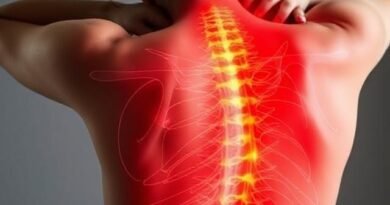Hair Loss Diseases
Hair is more than just a feature of our appearance; it’s a part of our identity, a canvas for self-expression, and, for many, a source of confidence. So, when hair starts thinning or falling out, it can feel like losing a piece of yourself. Hair loss diseases affect millions of people worldwide, and the emotional weight can be as heavy as the physical changes. Let’s dive into the most common hair loss conditions, their causes, and the human side of living with them, while exploring ways to cope and find hope.
Alopecia Areata: The Unpredictable Patches
Imagine waking up one morning, running your fingers through your hair, and finding a smooth, bald patch the size of a coin. That’s the reality for those with alopecia areata, an autoimmune condition where the body’s immune system mistakenly attacks hair follicles. It affects about 2% of the population and can strike at any age, often without warning.
The patches can appear suddenly, and for some, they may grow back only to reappear later. In severe cases, it progresses to alopecia totalis (complete scalp hair loss) or alopecia universalis (loss of all body hair). The unpredictability is what hits hardest. One person I spoke to, Sarah, described the shock of finding a patch while brushing her daughter’s hair for school. “I felt exposed, like everyone could see my vulnerability,” she said.
Treatments like corticosteroid injections or topical immunotherapy can help stimulate regrowth, but they don’t work for everyone. The emotional toll—feeling out of control of your own body—can lead to anxiety or self-consciousness. Support groups and counseling can be lifelines, reminding people like Sarah that they’re not alone.
Androgenetic Alopecia: The Gradual Fade
The most common form of hair loss, androgenetic alopecia, is what many call male or female pattern baldness. It affects about 50% of men by age 50 and up to 40% of women by menopause. For men, it often starts with a receding hairline or thinning crown. For women, it’s a diffuse thinning across the scalp, often most noticeable at the part line.
Genetics play a big role, but hormones like dihydrotestosterone (DHT) also contribute by shrinking hair follicles over time. It’s a slow process, which can make it harder to notice until it’s significant. John, a 42-year-old teacher, shared, “I didn’t realize how much it bothered me until I saw an old photo. I missed the guy with the full head of hair.”
Treatments like minoxidil (Rogaine) or finasteride can slow progression, and hair transplants offer a more permanent solution for some. But the emotional journey is real. Society often ties hair to youth and vitality, so losing it can feel like losing a part of your identity. John found solace in embracing his new look, even joking, “I’m saving money on shampoo!”
Telogen Effluvium: The Stress Shed
Sometimes, life’s stresses—physical or emotional—can push hair follicles into a resting phase, leading to telogen effluvium. This condition causes diffuse shedding, often triggered by childbirth, surgery, severe illness, or emotional trauma. Unlike alopecia areata, it doesn’t cause bald patches but rather a noticeable thinning across the scalp.
For Maria, a 30-year-old nurse, the shedding started after a particularly grueling year at work. “I’d see clumps in the shower and panic,” she recalled. The good news? Telogen effluvium is often temporary, with hair regrowing once the trigger is addressed. Managing stress, improving nutrition, and consulting a doctor to rule out underlying issues like thyroid imbalances can help.
Other Culprits: Scarring Alopecia and Beyond
Less common but more severe, scarring alopecia involves permanent hair loss due to inflammation that destroys hair follicles. Conditions like lichen planopilaris or frontal fibrosing alopecia fall under this category. These diseases often require aggressive treatment, like immunosuppressive drugs, to halt progression.
Other factors, like fungal infections, traction alopecia from tight hairstyles, or nutritional deficiencies, can also cause hair loss. Each condition carries its own challenges, but the shared thread is the emotional impact—feeling less like yourself or worrying about others’ perceptions.
The Human Side: Coping and Finding Hope
Hair loss isn’t just a physical condition; it’s a deeply personal experience. The mirror can become a source of dread, and social situations might feel daunting. But there’s hope. Advances in treatments, from platelet-rich plasma (PRP) therapy to new medications, are expanding options. Wigs, hairpieces, and creative styling can restore confidence. And for many, embracing their new look—whether shaved, short, or bare—becomes empowering.
Community matters, too. Online forums, local support groups, and even social media communities offer spaces to share stories and tips. “Finding others who get it made me feel less alone,” Sarah said. Professional help, like therapy, can also guide people through the emotional maze.
Moving Forward
Hair loss diseases remind us how much we tie our identity to our appearance. But they also teach resilience. Whether it’s alopecia areata’s unpredictability, androgenetic alopecia’s gradual fade, or telogen effluvium’s temporary shed, each condition carries a human story. By understanding these diseases and supporting one another, we can help those affected feel seen, heard, and hopeful. After all, beauty isn’t just in our hair—it’s in our strength to keep going.





